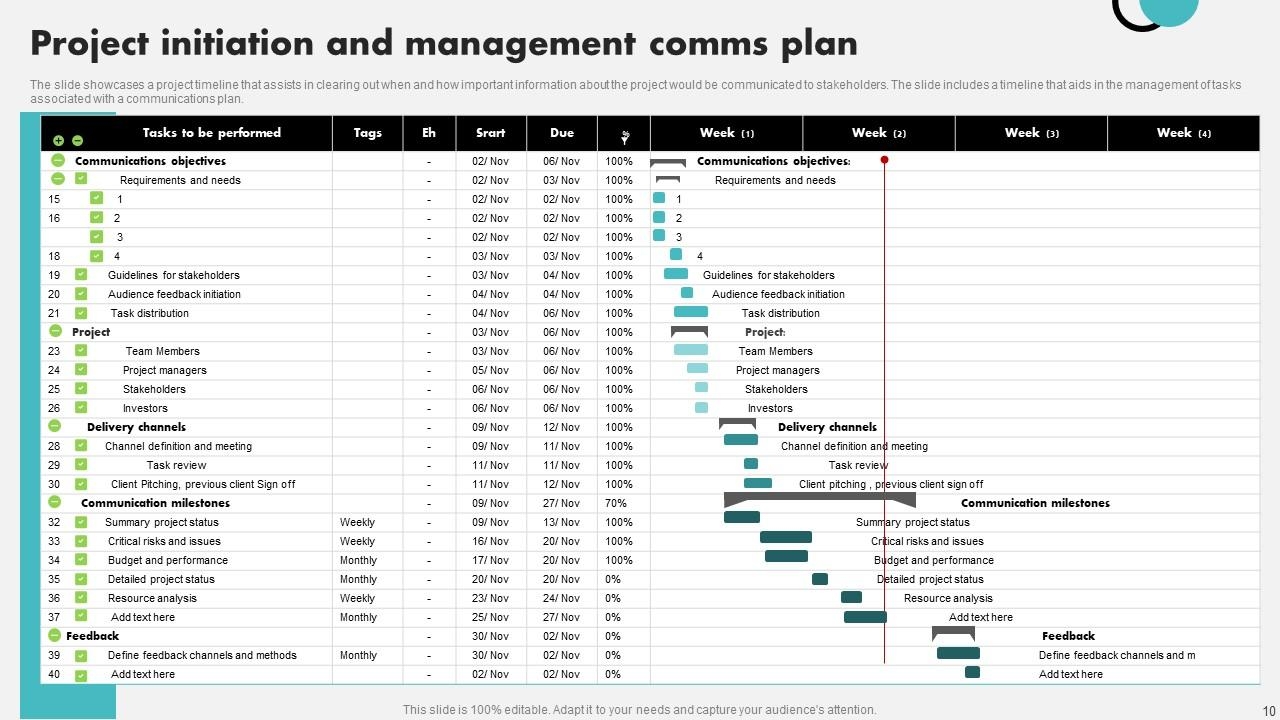Communication is key to the success of any project. A well-thought-out communications plan can help ensure that all stakeholders are informed and engaged throughout the project lifecycle. By creating a comprehensive communications plan, project managers can establish clear channels of communication, set expectations, and facilitate collaboration among team members.
Here is a simple template that you can use to create a project communications plan:
- Stakeholder Analysis: Identify all stakeholders involved in the project, including their roles, responsibilities, and communication preferences.
- Communication Objectives: Define the overall objectives of the communication plan, such as keeping stakeholders informed, managing expectations, and resolving conflicts.
- Key Messages: Determine the key messages that need to be communicated to stakeholders throughout the project.
- Communication Channels: Identify the communication channels that will be used to deliver messages, such as email, meetings, newsletters, or project management tools.
- Communication Schedule: Establish a timeline for when key messages will be communicated to stakeholders, including milestones, deadlines, and important updates.
By following this template, project managers can ensure that they have a structured approach to communication planning that aligns with the project’s goals and objectives.
Additionally, it is important to regularly review and update the communications plan as the project progresses to address any changes or new developments that may impact stakeholders.
In conclusion, a project communications plan is a vital tool for ensuring that all stakeholders are informed, engaged, and aligned throughout the project lifecycle. By using a template like the one outlined above, project managers can create a structured approach to communication planning that will help drive project success.
